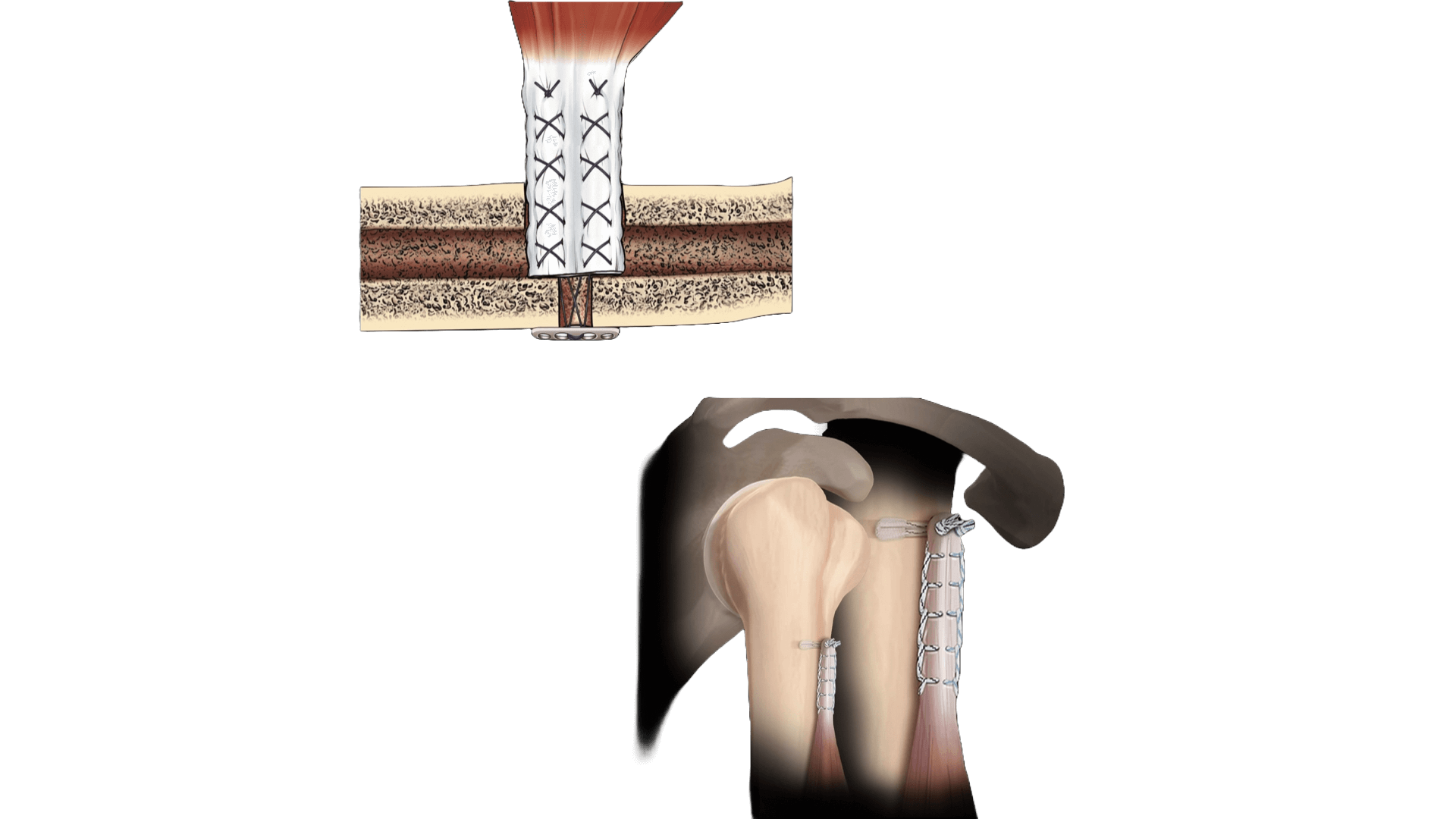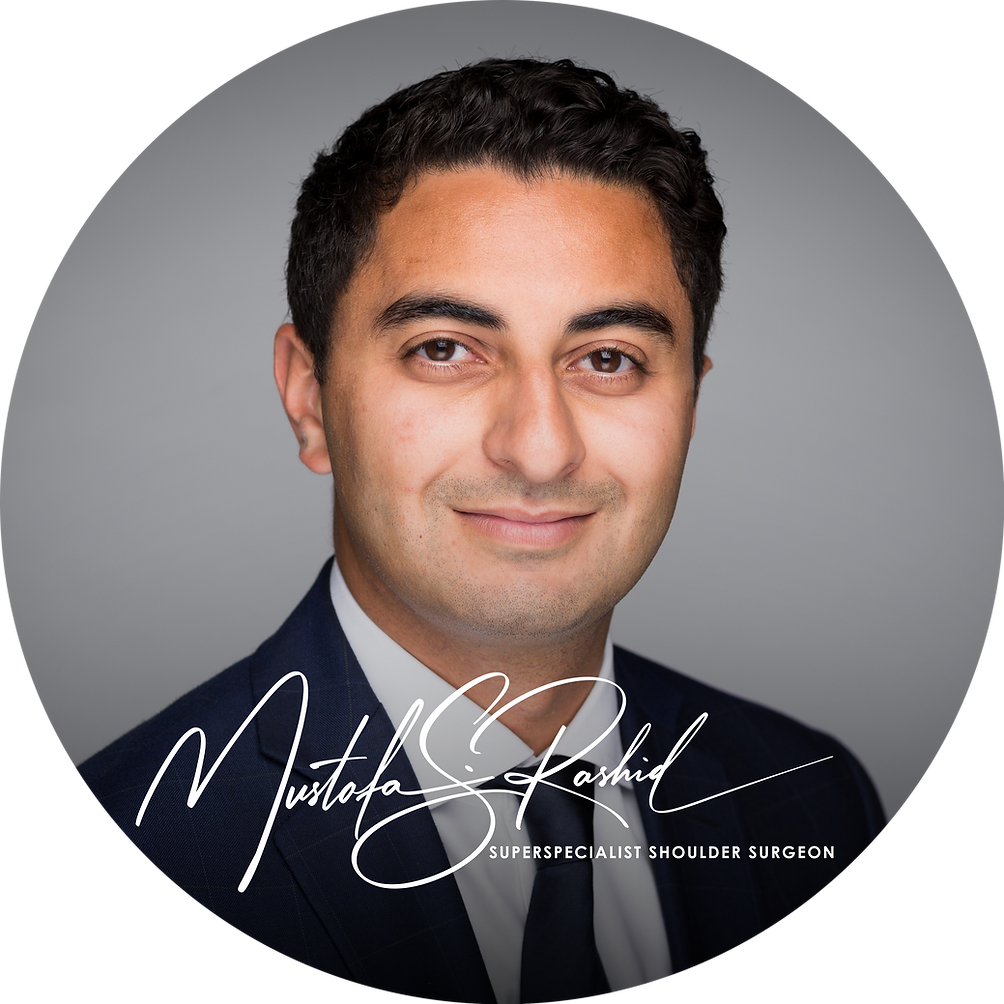Biceps Tendon Repair Surgery

Overview
The biceps muscle has two head, the short head and the long head. At the shoulder, the long head may detach in isolation, or as part of a rotator cuff tendon tear (which runs alongside the biceps tendon). At the elbow, both heads converge to attach to the radius bone in the forearm, as a single tendon. Detachment at the elbow is often as a result of trauma, where the force the muscle exerts overcomes the ability of the tendon to carry that force. Surgery to repair the long head detachments from the shoulder are rare compared to those at the elbow. Surgery is designed to securely repair the tendon to the bone it has detached from. The technique is different, depending on where the detachment occurs.
Indications for Surgery
Most patients can compensate with a detached long head of biceps tendon at the shoulder. Some will occasionally experience cramping in the muscle and may be better having the tendon repaired. This is the main indication for repair of the long head of biceps tendon at the shoulder. Weakness and shoulder pain are not common after the initial period of detachment.
At the elbow, it is common to experience weakness, particularly in rotating the palm facing up (supination). Most young, fit, active people (< 65 years old) will opt to consider surgery to improve the chances of returning to near normal strength. In both types of tear, the muscle will look different to the other side. This is often called, a “Popeye sign”.
Pre-Surgery Tests and Assessment
Before any surgery to the biceps, a variety of assessments and tests are performed to determine at which point the tendon has failed. Occasionally, a MRI scan is required to confirm the tear.
Procedure Details
Surgery for biceps repair comes in two forms: for injuries involving the long head in the shoulder, a keyhole technique is used to ensure the rotator cuff tendon in the shoulder is not torn. Then an incision is made to locate the tendon and repair it to the humerus using suture anchors.
For repair of the biceps tendon at the elbow, Dr. Rashid prefers a technique that uses two pairs of ultrastrong suture tapes to hold the tendon, and a titanium button implant. A hole is made in the radius bone to accept the tendon, which is secure on the other side of the bone using the button. This technique allows quicker rehabilitation and return to lifting activities.
Risks and Complications
The risks of biceps repair surgery are not common and are different, depending on which type of repair is used. Risks present in both repair types include infection, stiffness, asymmetry (muscle looking different to the other side), pain, recurrent tears, and nerve injury (very rare). At the elbow, half of patients will experience numbness and tingling in the forearm, which is often temporary but can be permanent. There is also a risk of fracture of the bone. Dr. Rashid has carefully trained over many years to perform this operation and can do so safely and effectively.
It is important to appreciate that whilst the tendon can be repaired, and it may heal, the surgery itself does not reverse the weakness in the tendon that played a role in the tear in the first place.
Recovery and Rehabilitation
Recovery following this type of surgery depends on which technique is used. Dr. Rashid will provide you and your physiotherapist with a protocol that involves when you can discard your sling (usually after a few weeks), and when to commence certain movements. Physiotherapy is helpful to ensure you regain your motion, function, and strength of the shoulder. Pain relief is often appreciated in the first month. Lifting is initiated gradually and supervised by your physiotherapist to ensure good form and safe parameters.
Expected Outcomes
Most people will be in a sling for a few weeks and therefore driving is not advised during this time. After that phase, rehabilitation will include phased return to full motion, activity, and strength. Most people can return to work after 2 weeks if they do not have a physically demanding job. Most people can return to manual work and sports, including weightlifting between 3 and 6 months after surgery. The success rates of this surgery are typically greater than 90%.
About the Author

Mustafa Rashid
Dr. Mustafa Rashid is an award-winning, well published superspecialised surgeon from the UK, specialising in shoulders
